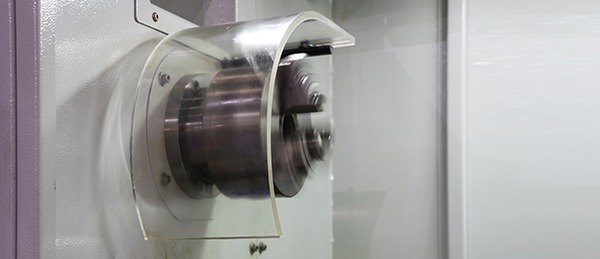
Since the Industrial Revolution, employers and workers have used new resources to perform more work with less physical effort. These resources include energy sources, mechanical equipment, and machine tools. This equipment has provided more efficient methods of production but also exposed employees to hazardous motions and hazardous energy.
OSHA, Washington (osha.gov), published machine-guarding standards several decades ago, but machine-guard violations remain in the top ten most-frequently cited standards. According to the Bureau of Labor Statistics, workers who operate and maintain equipment suffer approximately 18,000 amputations, lacerations, crushing injuries, and abrasions every year with more than 800 deaths also reported.
Safeguards are required to protect workers from preventable injuries. Any machine part, function, or process that may cause injury must be safeguarded. When workers are exposed to moving parts of a machine or accidental contact, the hazards need to be eliminated or controlled.
OSHA’s general requirements for safeguarding include, “one or more methods of machine guarding must be provided to protect the operator and other employees in the machine area from hazards such as those created by point of operation, ingoing nip points, rotating parts, flying chips, and sparks. Examples of guarding methods are barrier guards, two-hand tripping devices, electronic safety devices, etc.”
Many employers are aware of protecting the operator from a machine’s point of operation and hazardous motions; however “other employees” are often exposed to those hazards. The point of operation is the area on a machine where work is performed. The guarding device must be designed and constructed as to prevent the operator from having any part of their body in the danger zone during the operating cycle. Point-of-operation safeguards include two-hand tripping devices and electronic safety devices such as presence-sensing devices. To protect “other employees,” barrier guards and presence-sensing devices must be installed around the machine if there is exposure to the point of operation or other hazardous motions.
OSHA specifically lists machinery that typically require point-of-operation guarding in 1910.212(a)(3)(iv). OSHA also has standards for specific types of machinery such as woodworking, abrasive wheels (pedestal/bench grinders), mills, and calendars in the rubber and plastics industries, mechanical power presses, and forging machines. Another general standard for machine guarding is for the mechanical power-transmission apparatus. This standard requires guarding of energy transmission devices such as belts, pulleys, chains, sprockets, and shafts. EP
For the most recent guidance and best practices on machine guarding, ANSI (American National Standards Institute, New York) has published the B11 standards and series for specific machinery. For more information, visit ansi.org.
By Vince Plank, CSP, Safety Management Group
Vince Plank is a Safety Advisor at Safety Management Group, Indianapolis, IN, (safetymanagementgroup.com). He is a Certified Safety Professional with almost 20 years of safety and health experience.
The post Machine Guard Standards Keep Workers Safe appeared first on Efficient Plant.
The post "Machine Guard Standards Keep Workers Safe" appeared first on Efficient Plant







0 Comments